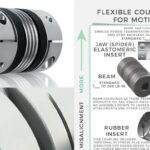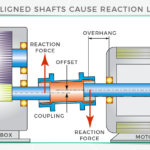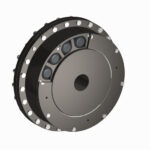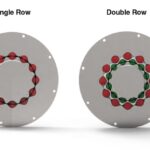 Updated May 2019 || Resonant frequency or natural frequency is a concern when selecting bellows couplings. If not considered, an otherwise sound coupling choice may perform poorly.
Updated May 2019 || Resonant frequency or natural frequency is a concern when selecting bellows couplings. If not considered, an otherwise sound coupling choice may perform poorly.
That is because excitation of a system or component resonant frequency left unchecked (or unconsidered in the design of a system) may cause significant vibration and (with time) system faults or outright failure.
Recall that resonant or natural frequency is the innate oscillation frequency of a system. It varies based on system components’ geometries, mechanical arrangement, inertia, and other factors in an assembly. But bellows couplings are meant to be torsionally stiff — so are flexible in movements that are perpendicular or transverse to the shafts of the two coupled devices. As such, the natural rotational frequency of the coupling is the main concern. The coupling is designed to flex in those other directions, but it should transmit torque with as little vibrations or oscillations as possible.
When selecting a bellows coupling:
1. Consider its resonant frequency
2. Compare this to the speeds at which the system operates
3. Ensure the typical speeds of the axis don’t excite resonant frequencies close to that of the assembly’s bellows coupling
Best practice for motion design work is to select a bellows coupling that has a natural frequency that is far higher or lower than the frequencies excited by the motor driving the axis. This is because it is the bellows coupling that becomes a critical component that determines the natural frequency of the whole system. After all, the bellows coupling transmits motor rotational motion to attached mechanical devices and in some cases loads — as well as sensitive feedback components.
Manufacturers often provide equations and recommendations for bellows couplings and their resonant frequency.





Leave a Reply